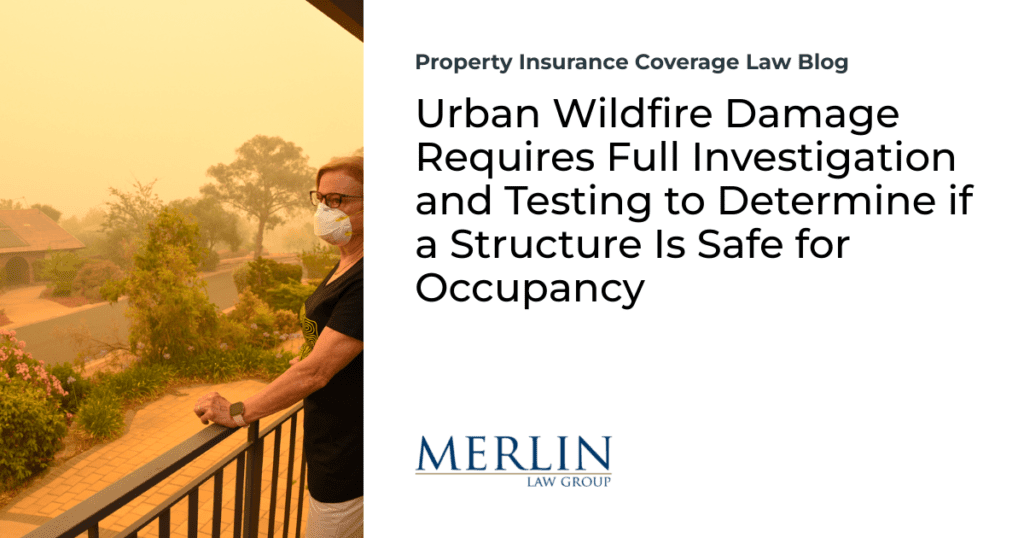Urban Wildfire Damage Requires Full Investigation and Testing to Determine if a Structure Is Safe for Occupancy

How many apartment complexes and other structures have dangerous residue from smoke, and the landlord does not want to find out how bad it is for fear of losing tenants? A proposed Colorado law takes aim at this difficult issue.
The Summary for Colorado HB23-1254 provides:
The bill expands conditions covered under the warranty of habitability for residential premises in relation to indoor air quality, water quality, and other health and safety issues. The bill adds water damage, fire damage, and damage due to a natural or an environmental event as conditions under which a residential premises is deemed uninhabitable.
The bill requires a landlord to have a residential premises inspected and tested by a certified industrial hygienist or an industrial hygienist to determine if the premises is safe for habitability. The bill also clarifies landlord responsibilities in remediating a residential premises to a habitable standard and how a tenant must give notice to a landlord if there are habitability issues with the tenant’s residence.
The bill directs the executive director of the department of public health and environment to establish health and safety standards for habitability by January 1, 2026.
The bill prohibits a landlord from retaliating against a tenant for making a good faith complaint about the conditions of the residential premises and provides conditions by which a tenant may terminate a lease if a habitability issue is not remediated.
Fire and smoke-damaged buildings have much more science regarding the dangerous residues left over from fires, especially urban wildfires such as the Marshall Fire in Colorado. I commented on these concerns last month in After The Urban Wildfire and Safety Concerns.
For policyholders, public adjusters, and restoration contractors faced with fire and smoke-damaged buildings, I suggest finding a competent industrial hygienist to determine the extent of the smoke, soot, and ash residue as an essential first step following any fire investigation. But, unfortunately, some insurers are like the apartment landlords—they really do not want to find all of the dangerous residues because thoroughly investigating only raises the amount of money they have to pay. Just read Independent Adjuster Leader Admits that Adjusters Tell Engineers Not to Place Opinions in Reports that Increase the Claim Value to get a sense of this ethical claims problem.
Thought For The Day
The safety of the people shall be the highest law.
—Marcus Tullius Cicero





